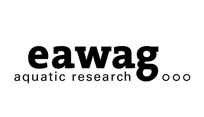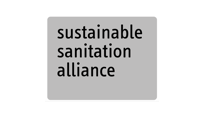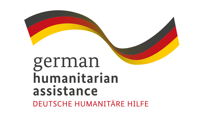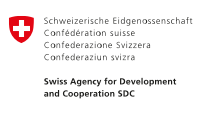Animal collection and transport refers to the use of draught animals for the collection and transportation of solid waste using a cart or panniers. A waste collection worker is always required to collect the waste, lead the animal and empty the carrier.

A cart or panniers are attached to a draught animal and used for the collection and transportation of solid waste. Donkeys, mules, horses or buffaloes are typical draught animals in various contexts. A worker collects the waste from the waste producers and fills the cart or panniers. The waste is then transported and tipped off the carriers at a transfer station C.5, a treatment facility (section T ) or for final disposal (section U ).
Design Considerations
Harness design aims to distribute the weight evenly and prevent injury while allowing natural movement and preventing chafing and sores. Padding and appropriate fitting are needed to secure the harness and protect the animal. Carts or panniers must be securely attached to the harness but be easily detachable when needed. For carts, a low centre of gravity and a wide enough wheelbase prevent accidental tipping. Preferably, the load is positioned directly over the axle. A brake system is indispensable, especially for going downhill. A robust axle and simple suspension system can improve the cart’s durability and ride quality. Suitable tyres for the terrain are required. A tipping mechanism can either directly tilt the body of the cart or use a manually operated worm and nut mechanism. For panniers, a robust but flexible structure with a system to secure them on the animal for stability is important. The maximum load capacity and size are defined by the animal; pulling should be comfortable throughout the whole collection route, especially while moving uphill with a loaded cart or panniers.
Materials
The draught animals used (such as horses, donkeys, buffalos or mules) are context-specific and should be adapted to the local conditions. Panniers and carts can be designed and constructed in many ways using various materials (such as metal, wood or various basket materials) depending on their availability locally.
Applicability
The radius of operation is limited to a maximum of around 3 km due to low speeds. Depending on the animal’s level of fitness, travel distances of up to 5 km may be possible. The capacity of a cart can range from 1 to 4 m3, depending on its design, and should be adapted to the type of road, terrain and draught animal. For longer distances larger capacity motorised vehicles C.4 or intermediate storage options like a transfer station C.5 should be considered. Animals equipped with panniers can collect waste in areas with uneven terrain, unpaved roads and steep slopes. Nonetheless, the volume of panniers is limited, and several animals may be required to cover the collection needs. The small and adaptable size of the carts and panniers means the technology can be used in areas that are otherwise difficult to access (such as narrow streets or densely populated areas). Because of its slow speed, animal transport may not be suitable in highly urban areas as it can slow or obstruct the traffic.
Operation and Maintenance
The materials required to build the carts or panniers are often locally sourced and easy to maintain and repair. The equipment can be regularly inspected and repaired to maintain full functionality. Adequate grease should be added to moving parts. As only animal power is used, no fossil fuels or electricity are required. Care must be taken of the animal, including proper hoof care and protection, regular inspection, and maintenance to avoid injuries and infections. Adequate feeding should be ensured as well as shelter for rest periods. Animals might spend a long time in hot and sunny conditions, so proper hydration and sufficient rest is essential.
Health and Safety
As a draught animal is used, it is important that both the handler and the animal are well trained. Gentle commands, calmness and patience are beneficial to avoid stress and accidents. For the handler, Personal Protective Equipment (PPE) is necessary as they will be in direct contact with waste. Proper PPE includes gloves, boots, long sleeves, a cap, and trousers or an overall X.5.
Costs
Generally, the capital costs are relatively low and comprise the capital cost of the animal, cart or panniers. Operation and maintenance costs are also low as no fuel is required and maintenance can often be done using locally available parts. The animal must be fed and space is required for both the animal and the cart when not in use. Some expense is necessary to secure and maintain the health of the animal in an optimal state as the technology relies heavily on its capabilities. For small businesses in the informal sector (often run by very poor people), using animal traction can be relatively expensive.
Social Considerations
Animal collection and transport are most appropriate in areas with a history of using draught animals. This is linked to the social acceptance of draught animals and local knowledge to handle and care for the animals. The animals’ welfare is an important consideration, ensuring that they have sufficient food, rest and adequate equipment, and only carry weights that match their capacity and the terrain. Animal excreta management is necessary to avoid it spreading, especially in denser urban areas. Faeces can be cleared from the ground or captured directly in a bag under the animal’s rear.
Key Decision Criteria
Input Products
Organic Waste
Organic Garden/Wood Waste
Organic Food/Kitchen Waste
Recyclables
Plastics
Paper and Cardboard
Metals
Glass
Textile
Mixed Waste
Residual Waste
Output Products
Organic Waste
Organic Garden/Wood Waste
Organic Food/Kitchen Waste
Recyclables
Plastics
Paper and Cardboard
Metals
Glass
Textile
Mixed Waste
Residual Waste
Response Phase
Application Level
Management Level
Space Required
low
Technical Complexity
low
Objectives & Key Features
Waste collection and waste transport over short distances
Strength & Weakness
- No fossil fuels needed
- No driving licence requirement for the driver
- Suitable for narrow streets, unpaved roads and hilly terrain
- Low capital and operational costs compared to motor vehicles
- Slow; traffic congestion/interference with traffic
- Limited capacity, short distances only, not adequate for long transportation routes
- Only appropriate if draught animals are commonly used locally
Selected References
Guidance document to design solid waste collection systems
Technical design and manufacture guide for animal-drawn carts
Barwell, I., Hathway G. (1986): The Design and Manufacture of Animal-Drawn Carts, IT Publications, UK, ISBN: 978-0946688524 pages






